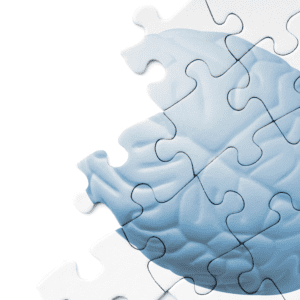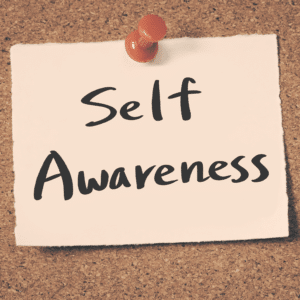概要
人生でたくさんのことを学んできました。学校でノートを取ったり、講義形式の授業を受けたりしたかもしれません。読み物で勉強したり、テストを受けたりしたかもしれません。しかし、これまでどれだけ勉強したとしても、学んだことをさらによく覚えておくのに役立つテクニックがあります。それは、脳には情報を処理するために連携して機能する 2 つの異なるシステム、短期記憶と長期記憶 (または「記憶ストレージ」) があるからです。短期記憶は数分間しか持続せず、その後は消えてしまいます。そのため、必要なときに利用できるように、情報を長期ストレージに転送する方法を練習することが重要です。
マインドマッピング
情報を整理するために使用できるテクニックの 1 つに、マインド マッピングがあります。これは、トピックの主要なポイントをすべて書き出し、それらを相互の関係に基づいてサブトピックとサブサブトピックに整理することを意味します。マインド マッピングは紙または電子的に行うことができますが、どちらの方法でも、学習しようとしていることの全体像を理解するのに良い方法です。
頭字語と記憶術の作成
Acronyms and mnemonic devices are two effective study techniques that can help you memorize lists of words or numbers. Acronyms are created from the first letter in each word, while mnemonic devices are made up of rhyming words or images.
To create an acronym, take a list of words that you want to remember and start with the first letter of each word. Then create an image that represents all these letters together (for example: “Sunny Side Up” could stand for “Sunrise/Sunset; Noon Time; Evening/Nighttime”). This technique may sound silly at first but it really works! If you’re having trouble coming up with good images, try using pictures from magazines or books as inspiration! If there’s no way around this method–or if your memory is just not strong enough–try creating another acronym based on a different category (i.e., instead of making up one big picture from all those letters at once try breaking down smaller pieces into their own separate pictures).
Another way people use acronyms is by taking something memorable about themselves like interests/hobbies etc., then making those into short sentences so they’re easier to remember later when studying them again later down-line… For example: “I’m interested in music because I like listening to my favorite artists such as Adele”.
自分自身に情報を話す
Talking yourself through the information is a great way to help you remember it. As you read or listen to something, try saying it out loud. When you do this, your mind will go over the material again in detail and reinforce what you have learned in your brain. You can also use this technique when studying by writing down your thoughts on paper or using an audio recorder if that works better for you.
If possible, start with a clear statement of the topic or idea that you are going to study (for example: “I am going to learn about the Civil War”). Then write down the main points of what you want to learn about; these should be things like dates, names and events related directly back up into something bigger like “What was happening politically at this time?” After each point has been written down as best we can understand them ourselves based on our own research (and thus understanding), try explaining those same points in our own words – this helps reinforce understanding because we now know how much we actually do know compared with what might sound good but isn’t accurate!
勉強パートナーを利用する
You can also use a study partner to quiz each other. Your goal is to make sure that both of you are able to answer questions correctly, so be sure not to talk over each other or interrupt your partner as they’re answering. If one person finishes before the other, it’s okay for them just to say “I’m done” and wait for their partner’s response before starting on another question. This will help keep things moving along smoothly without too many pauses in between questions or answers being given out of turn (which can lead into arguments).
If possible, try keeping track of how many times each person gets something wrong when testing each other out like this; this will help determine if there are any gaps in knowledge between both parties so they know where they need more practice before taking an exam or test together later down the road!
他の人に教材を教える。
When you teach someone else the material, you’ll find that it helps you remember it better yourself. You can teach in person or online, but either way, teaching someone else is a great way to practice the material and get feedback on your understanding.
Teaching also gives you an opportunity to reflect on how well-organized your own thoughts are if they don’t make sense when spoken out loud (or written). If there’s any part of what was said that was confusing or unclear, this will become apparent as soon as another person starts asking questions!
記憶技術は、勉強して学んだことを覚えておくために使えます。
記憶術は、勉強して学んだことを覚えておくために使えます。この術は、学校の勉強、仕事関連のタスク、さらには私生活にも使えます。
- 記憶術を使う: 記憶術とは、何かを別の単語やフレーズと関連付けることで覚えるのに役立つ記憶補助器具です。たとえば、「e」という文字は「tree」と韻を踏むのが簡単です。そのため、四季 (春、夏、秋、冬) があることを覚えたい場合は、「春になると木々が葉を茂らせる」というフレーズを考えてください。覚えておくべきことと、それが他の何か (韻を踏む単語など) とどのように関連しているかを創造的に関連付けるほど、脳は将来思い出そうとするときに、その 2 つを常にランダムまたは無関係に感じることなく、関連付けやすくなります...
まとめ
覚えておいてください、暗記は練習を必要とするスキルです。誰もが自然にできるものではありませんが、正しい学習テクニックと練習を行えば、誰でも記憶力を向上させることができます。









